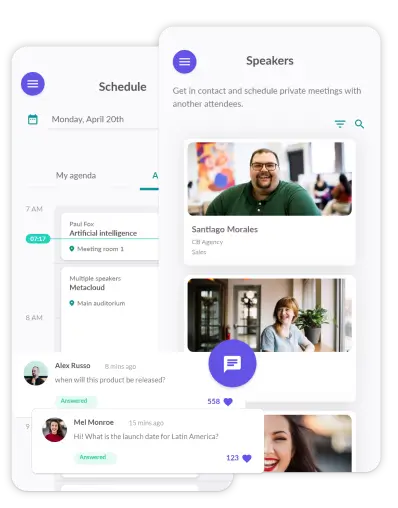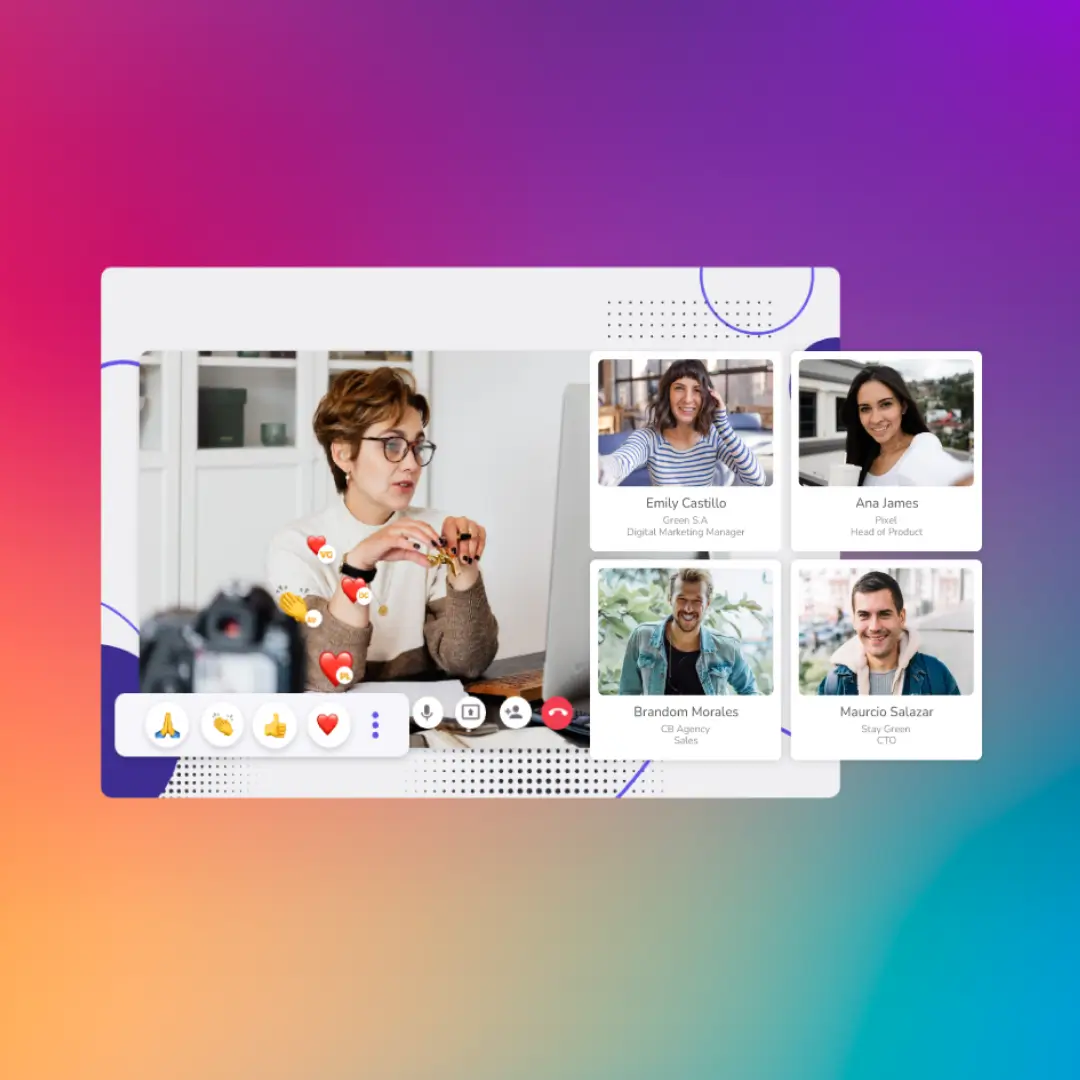Events are crucial for ensuring business growth. And that’s particularly true for multi-brand companies. In most cases, conglomerates rely on events to achieve a wide variety of revenue goals, such as:
- Increasing brand awareness
- Attracting qualified leads
- Transforming leads into prospects
- Achieving higher sales rates
- Ensuring brand advocacy
- Cross-selling and up-selling their products
- And more
However, conglomerates often face unique challenges when it comes to organizing events. With multiple brands under one umbrella, creating an event that effectively showcases each brand while maintaining a cohesive overall message is challenging.
Multi-brand companies can overcome these challenges with the right strategies and create events that drive results. Regardless of your multi-brand companies’ logistic and structural difficulties, specific best event practices will help you achieve your goals and ensure ongoing growth rates.
Whether you’re organizing a product launch for European trip packages for example, a brand activation event, or a trade show, the tips and best practices we’ll share in this article will help you create memorable events that drive results for your multi-brand company. But first, let’s discuss the number one element that will ensure the impact of your event-related practices.
Discover how Eventtia helps world-leading brands digitize and scale their events
Learn more
Clarity as the Main Precursor of Best Event Practices
If you don’t have clarity, any event-related practice, technique, or strategy will fall short. To plan an event that will truly resonate with your audience and deliver the desired outcomes, you must first ensure that you have a clear understanding of several key aspects, such as your:
→ Goals
You must clearly understand what you hope to achieve through your event. Whether it’s increasing brand awareness, building brand affinity, attracting qualified leads, or strengthening connections with your customer, clearly defined goals will help guide your decision-making throughout the planning process.
→ Market
You can’t run an event out of its context. It’s crucial to understand your market, including factors such as:
- Trends
- Influences
- Preferences
- Potential challenges
- Opportunities
By having a clear picture of your market, you can tailor and align your event with your market’s characteristics, making it relevant and achieving a higher impact.
→ Audience
Another important aspect is understanding your audience. Apart from knowing who your attendees are, you also have to identify elements, such as their:
- Demographic characteristics
- Motivations
- Needs and preferences
- Behaviors
- Consumption patterns
By understanding your audience more deeply, you can create an event that genuinely resonates with them and meets their needs. Moreover, it will help you create the right levers to nudge people into taking specific actions, such as purchasing your product.
→ Value
Identify your event’s unique benefits and features to make it stand out from the competition. By showcasing your value proposition clearly and compellingly, you can attract more attendees and generate greater interest in your event.
→ Message
Gaining clarity regarding your communication and messaging strategy is crucial. You can achieve it by building a clear and consistent brand message throughout your event, from the marketing materials to the event itself. Ensuring your message is clear and aligned with your goals can create a more cohesive and impactful event experience.
→ Planning logistics
How you’ll run your event is as important as the event itself. To ensure efficiency, you need clarity regarding the protocols you’ll follow and the event tech platform you’ll use. For example, at Eventtia, we’ve built all-in-one event management software focused on meeting the needs of multi-brand companies and conglomerates.
Besides guiding professionals throughout the event cycle, our developers are committed to creating tailored solutions that align with your company’s multi-departmental needs.
Clarity is essential for planning successful events. By clearly understanding your goals, market, audience, value proposition, message, and planning logistics, you can create an event that truly resonates with attendees and delivers your desired outcomes.
Moreover, clarity will help you achieve a higher impact when deploying the best event practices we’ll discuss next.
Best Event Practices You Can Try Immediately
Whether you’re running an event to drive recognition or increase revenue through cross-sells and up-sells, you should always consider applying the following best practices:
→ Partner with complementary brands to broaden your audience reach
Partnering with complementary brands is an effective way to broaden your event’s outreach. By collaborating with companies that share your target audience but offer non-competitive products or services, you can leverage their existing customer base to attract new attendees to your event.
You can partner with these complementary brands by inviting their representatives as speakers at your events. Also, you can offer them to use your platform for showcasing their products and engaging with your attendees.
In exchange, you can ask them to promote your event. This practice will help you increase attendance and strengthen your brand image as a collaborative and forward-thinking organization.
→ Associate your event with thought leaders and industry influencers
Increase your visibility and credibility by associating your event brand with thought leaders and industry influencers. By inviting well-respected experts to speak at your event or participate in a panel discussion, you can provide attendees with valuable insights and perspectives while boosting the profile of your event.
→ Use technology to streamline event planning processes
Choosing the right event management software is crucial to streamlining and standardizing event planning processes across multiple departments and brands.
From event landing pages and online registration to mass communication and check-in solutions, event tech partners like Eventtia will help you plan and execute your event more efficiently. Deploying these tools can help you save time and resources while improving the overall attendee experience.
→ Offer valuable content to provide attendees with actionable insights
Offering valuable content is an effective way to engage attendees and provide them with actionable insights. Consider including insightful keynote presentations, breakout sessions, or hands-on workshops that provide attendees with practical knowledge and skills they can use to improve their business or personal lives.
This practice will help you position your company as an industry leader and gain the trust of your attendees, aka leads, prospects, and customers.
→ Create networking opportunities for attendees to connect with industry peers
Generating networking opportunities is critical to creating a successful event. By providing attendees with options to connect with industry peers and thought leaders, you can help foster valuable relationships and create a community around your event. This practice will help you build brand loyalty and drive future attendance.
→ Use experiential marketing techniques to showcase your products
Experiential marketing techniques are highly effective in showcasing your products or services. For example, you could include elements such as:
- Interactive displays
- Product demonstrations
- Immersive activities
This practice will allow attendees to engage with your brand in a more memorable and impactful way.
→ Use video and photography to capture key moments from your event
By documenting your event, you can create valuable content attendees can share on social media and other channels to help promote future events and generate interest among potential attendees. Moreover, you can offer valuable session content on demand, generating qualified leads even after the event.
→ Collect feedback from attendees to gain insights into their experience
Collecting feedback from attendees is critical to understanding their experience and making improvements for future events. This practice could include post-event surveys or focus groups to gain deeper insights into what attendees liked and disliked about the event.
→ Follow up with attendees after the event to maintain engagement
Finally, following up with attendees after the event is essential to maintain engagement and keep your brand in mind. This practice could include personalized thank-you messages, exclusive offers or discounts, or invitations to future events.
By implementing these best practices, you can create a successful event that engages attendees, strengthens your brand, and drives desired outcomes. From partnering with complementary brands to using technology and offering valuable content, these practices can help you create an unforgettable event experience that resonates with your target audience.
Wrap-up
Events are crucial for multi-brand companies to achieve various revenue goals. By deploying the best event practices, multi-brand companies can create events that resonate with attendees and deliver desired outcomes.
These practices include partnering with complementary brands, associating events with thought leaders, using technology to streamline planning processes, and offering valuable content to provide attendees with actionable insights. Through these practices, multi-brand companies can create memorable events that drive results and ensure ongoing growth rates.
Discover how Eventtia helps world-leading brands digitize and scale their events
Learn more
Share










